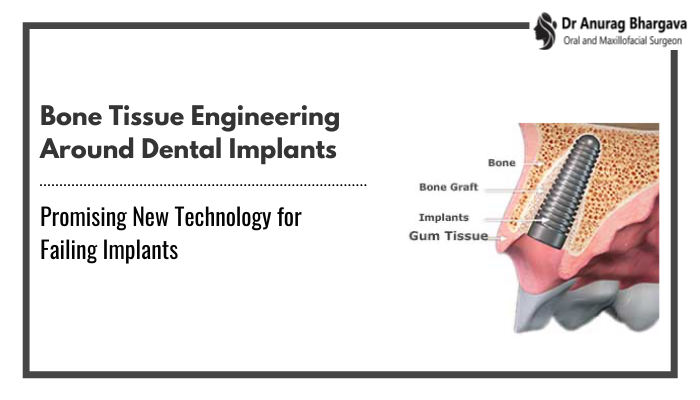Whether it's cracked or missing teeth, dental implants are a great option if you want to get that perfect smile. But if you want to get dental implants that are also functional, you need enough alveolar ridge bone height. If you suffer from bone loss around where you want to get an implant, bone tissue engineering is a promising new technology offering solutions that would not have been possible with the conventional techniques.
Osseointegration
After a dental implant is placed, as the bone around the implant heals, the process of osseointegration occurs. The bone fuses with the implant and forms a permanent bond with it such that if you tried to separate them, you couldn't do so without a fracture. This takes two to six months.
The process of osseointegration makes your body generate bone cells around the implant surface to cover and anchor it to your jaw bone. This makes sure that a dental implant will work fine and not cause any problems like a failed dental implant.
With advancements in technology, we have switched to bone grafting using an individual's own body parts. After grinding, mixing with blood, and centrifuging, a graft is prepared. This graft is used to fix large defects in the bone before an implant can be placed. This assures greater success for the implant.
Why Do Dental Implants Fail?
Dental implants need to be placed carefully by a skilled surgeon. And while it's a generally successful procedure, failure does happen. But if it does, treatment is possible.
If you recently got an implant and it feels like it's moving around a bit, this might be the first sign that your implant is going to fail. If the bone does not grow properly around the implant, it won't really be stable. And while it may only move around a little at first, over time, it may start to feel wobbly and move whenever you chew or talk. It will start to move a lot more.
And without osseointegration, it might also pain, swell, or get infected. If an implant has failed, we can usually see this in an X-ray in the form of bone loss around the implant.
If an implant fails, you might have to deal with:
- The implant may become infected
- Teeth, blood vessels, and everything else around the implant may be damaged
- You might feel pain, numbness, or tingling in your natural teeth, gums, lips, or chin because of nerve damage
- If the implant placed in your upper jaw goes through into one of your sinus cavities, it can cause problems with your sinuses
Why is Bone Grafting Needed?
Let's take a look at the problem first. Before you can have dental implant surgery, it is important to see if your jawbone is thick enough or not too soft. If it's too soft, when you chew, it puts pressure on the bone. So if the bone fails to support the implant, the implant might eventually fail.
But bone grafting can help us create a more solid base for the implant. What can we use for a bone graft? We can use it from another location in your body or prepare a more synthetic bone graft. A bone graft can take a few months to effectively grow and support an implant.
What can Bone Tissue Engineering Do For Me?
- Bone Tissue Engineering deals with developing strategies for the regeneration of diseased or damaged bone. When done around dental implants, this can help fix large defects that would not be possible to fix with conventional methods.
- Bone tissue engineering around dental implants can help you regain bone volume and vertical bone height, ultimately increasing the success rates of such implants.
- Bone Tissue Engineering is emerging as a promising alternative to autogenous and biomaterial-based bone grafting.
Let's just say that bone tissue engineering around dental implants is a promising new technology that can help fix large defects before placing an implant, making for higher success rates of implant surgery. This is a huge upgrade over conventional methods.

